
Lamu Island: A Hidden Gem on Kenya's Coast
Discover Lamu Island, a UNESCO World Heritage Site, with its rich Swahili culture, ancient architecture, and pristine beaches on Kenya's coast.
Lamu Island, part of the Lamu Archipelago in Kenya, is a tranquil and historic destination. The island, with its narrow winding streets and ancient Swahili architecture, offers a glimpse into a bygone era. As you stroll through the town, you'll find beautifully preserved stone buildings, intricately carved wooden doors, and bustling markets that showcase the rich cultural heritage of the region. Lamu Island is a UNESCO World Heritage Site, known for its unique blend of African, Arab, and European influences. The island is car-free, and donkeys are the main mode of transport, adding to its charm and slow-paced lifestyle. Visitors can enjoy a range of activities, from exploring the old town, visiting museums, and taking dhow boat rides to the surrounding islands. The island's pristine beaches are perfect for relaxation and water sports such as snorkeling and diving. The warm Indian Ocean waters are home to vibrant coral reefs and a variety of marine life. Lamu is also famous for its festivals, including the Lamu Cultural Festival and the Maulidi Festival, which attract visitors from around the world.
Local tips in Lamu Island
- Carry cash as ATMs are scarce on the island.
- Respect local customs; dress modestly, especially in town.
- Visit the Lamu Museum for insight into the island's history.
- Take a dhow boat trip to explore the surrounding islands.
- Try the local Swahili cuisine, especially the seafood.
Lamu Island: A Hidden Gem on Kenya's Coast
Lamu Island, part of the Lamu Archipelago in Kenya, is a tranquil and historic destination. The island, with its narrow winding streets and ancient Swahili architecture, offers a glimpse into a bygone era. As you stroll through the town, you'll find beautifully preserved stone buildings, intricately carved wooden doors, and bustling markets that showcase the rich cultural heritage of the region. Lamu Island is a UNESCO World Heritage Site, known for its unique blend of African, Arab, and European influences. The island is car-free, and donkeys are the main mode of transport, adding to its charm and slow-paced lifestyle. Visitors can enjoy a range of activities, from exploring the old town, visiting museums, and taking dhow boat rides to the surrounding islands. The island's pristine beaches are perfect for relaxation and water sports such as snorkeling and diving. The warm Indian Ocean waters are home to vibrant coral reefs and a variety of marine life. Lamu is also famous for its festivals, including the Lamu Cultural Festival and the Maulidi Festival, which attract visitors from around the world.
When is the best time to go to Lamu Island?
Iconic landmarks you can’t miss
Peponi Hotel Lamu
Experience the charm of Lamu at Peponi Hotel, where luxury meets authentic Swahili culture amid breathtaking coastal views.

Lamu House
Experience the charm of Lamu at Lamu House, where traditional Swahili architecture meets modern comfort in a serene coastal setting.

The Majlis Hotel Lamu
Experience the perfect blend of luxury and tradition at The Majlis Hotel Lamu, a serene escape in Kenya's stunning Lamu Archipelago.

Lamu Fort
Discover the rich history and stunning architecture of Lamu Fort, a key landmark in Lamu's enchanting coastal landscape.
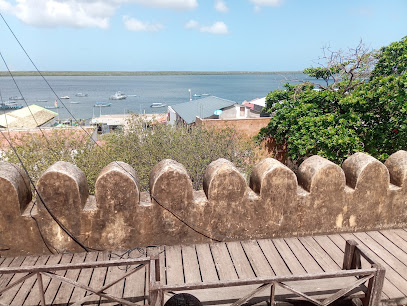
Lamu Palace Hotel
Discover the culinary traditions of Lamu at the Lamu Palace Hotel, where local flavors and stunning views create an unforgettable dining experience.
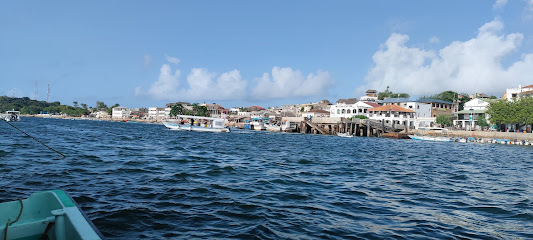
Floating Bar & Restaurant Lamu
Experience the unique charm of the Floating Bar & Restaurant Lamu, a serene dining destination on the Indian Ocean with stunning views and delicious cuisine.
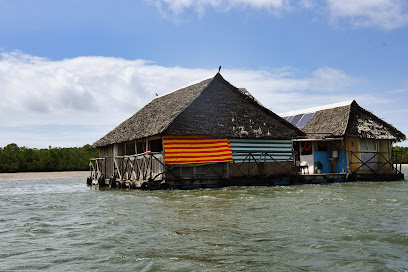
Lamu
Explore Lamu, Kenya's gem of the coast, where history, culture, and stunning beaches create an unforgettable travel experience.
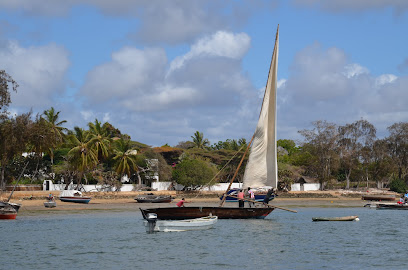
Lamu Museum
Uncover the cultural treasures of Lamu Museum, a gateway to the island's rich history and vibrant heritage.
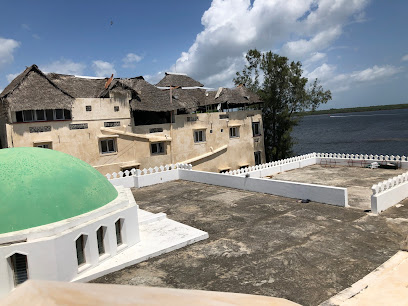
Kijani Hotel
Discover the enchanting Kijani Hotel in Lamu, where luxury meets tranquility on the stunning shores of Shela Beach.
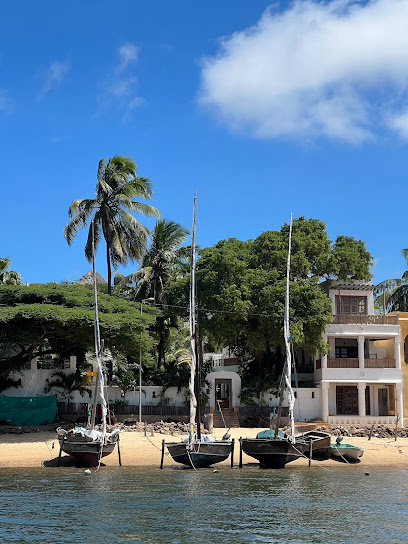
Lamu Sunsail Hotel & Restaurant
Discover the enchanting Lamu Sunsail Hotel & Restaurant, where coastal beauty meets exquisite cuisine in the heart of Lamu's vibrant culture.

Seafront Cafe
Discover the coastal charm and delectable flavors of Lamu at Seafront Cafe, your go-to culinary destination by the sea.
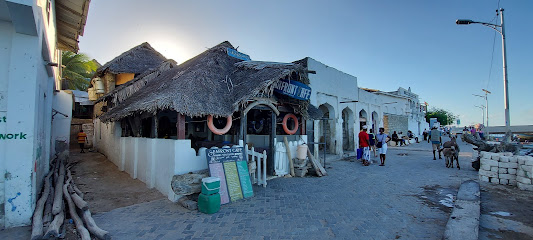
Stopover Guest House - Lamu town
Experience the rich culture and history of Lamu Town at Stopover Guest House, your charming retreat in Kenya's coastal paradise.

Masjid Riyadha & Islamic Centre
Discover the serene beauty and historical significance of Masjid Riyadha & Islamic Centre, a cultural gem in Lamu, Kenya.
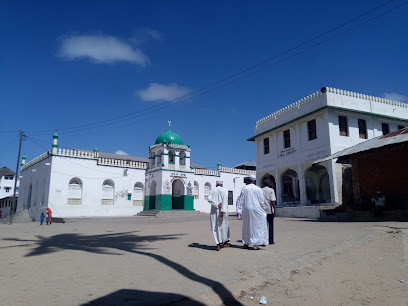
LA DULCE TORO CAFE
Discover La Dulce Toro Cafe in Lamu: A coffee haven serving aromatic Kenyan brews in a cozy atmosphere, perfect for relaxation and socializing.
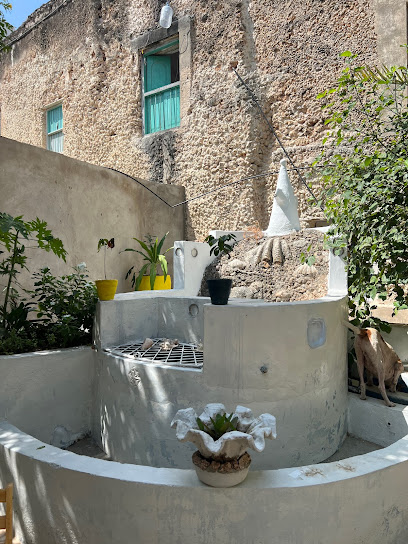
The Fort Of Shela
Discover the perfect blend of history and relaxation at The Fort Of Shela, your ideal coastal holiday apartment in Shela, Kenya.
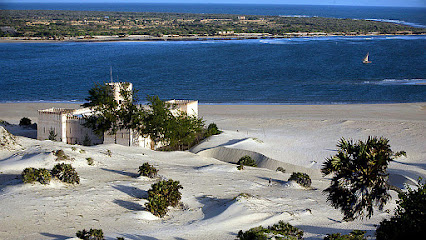
Unmissable attractions to see
Masjid Riyadha & Islamic Centre
Explore the Masjid Riyadha & Islamic Centre, a serene spiritual hub in Lamu, reflecting the rich Islamic heritage and stunning architecture of this UNESCO World Heritage site.
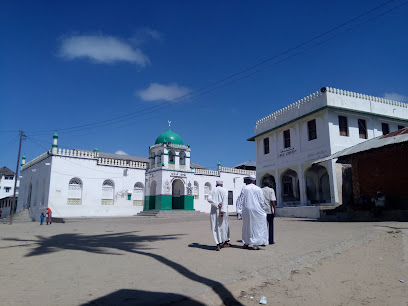
Siyu Fort
Discover Siyu Fort, a captivating historical site in Lamu, Kenya, showcasing the rich cultural heritage of the Swahili Coast.
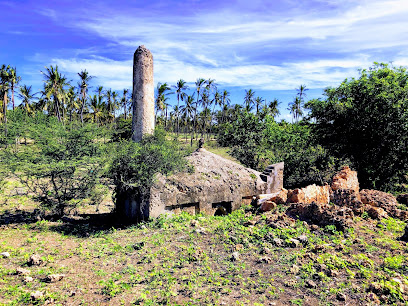
Baharini
Explore Baharini, a stunning tourist attraction in Kenya, where nature’s beauty meets rich cultural experiences for every traveler.
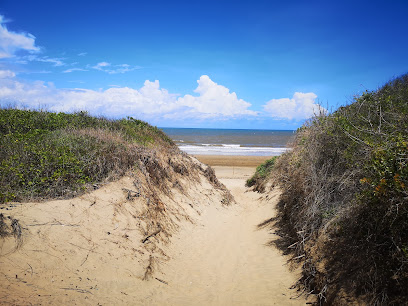
Shela dunes
Explore the stunning Shela Dunes, a serene Kenyan paradise with breathtaking views, perfect for relaxation and outdoor adventures.
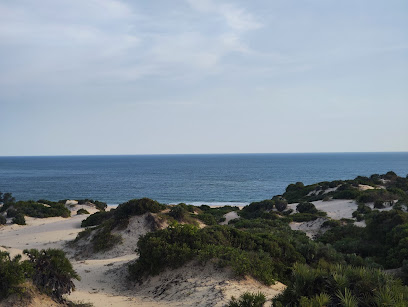
Mainland Crab Farm
Explore the unique experience of crab farming at Mainland Crab Farm in Mokowe, where education meets nature in a serene setting.

Ras Kitao
Experience the serene beauty and rich cultural heritage of Ras Kitao, a stunning coastal attraction in Shela, Kenya, perfect for relaxation and exploration.

Lamu Local Artist Shop (Shella)
Explore Lamu's artistic heritage at the Lamu Local Artist Shop, where creativity meets sustainability in unique handicrafts and garden furniture.
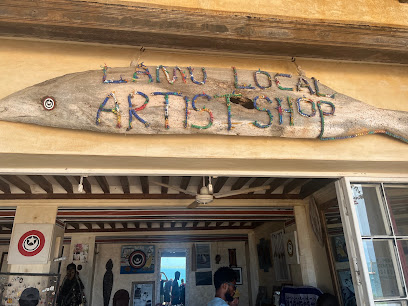
Waridi Beach,Lamu Mainland
Discover the hidden paradise of Waridi Beach on Lamu Mainland, where pristine sands meet azure waters and tranquility reigns supreme.
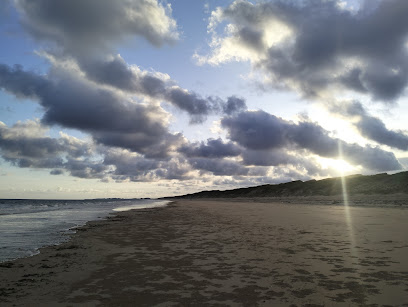
Kinai farm
Explore the serene beauty of Kinai Farm in Lamu, a must-visit garden showcasing Kenya's rich biodiversity and tranquil landscapes.
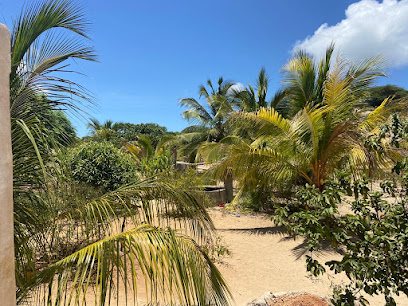
Kisuke Beach
Discover the pristine beauty of Kisuke Beach in Kenya, where golden sands meet crystal-clear waters for an unforgettable coastal experience.
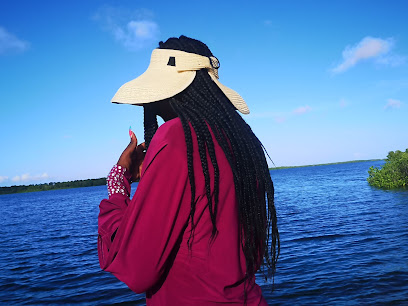
Wiyoni Beach
Experience the untouched beauty of Wiyoni Beach, a tranquil haven along the Kenyan coast perfect for relaxation, exploration, and stunning sunsets.
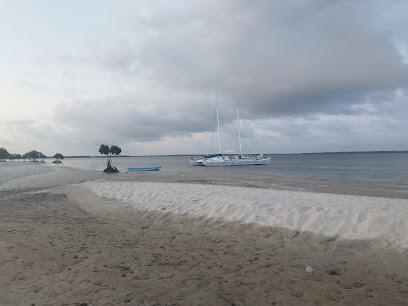
Shela
Explore Shela, where pristine beaches meet rich Swahili culture, offering an unforgettable experience on the Kenyan coast.
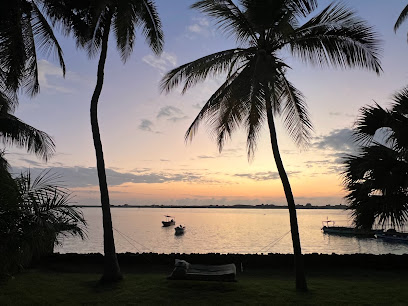
Mwambani
Experience the tranquil beauty of Mwambani Park in Kiongwe, a serene escape for nature lovers and a perfect spot for relaxation and exploration.

Ubunifu Lamu Community Art Center
Immerse yourself in the creativity and culture of Shela at the Ubunifu Lamu Community Art Center, a hub for local art and community engagement.
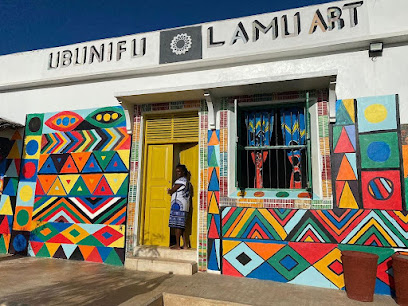
Takwa Beach 425
Experience the untouched beauty and cultural heritage of Takwa Beach in Lamu, a serene paradise for relaxation and adventure seekers alike.
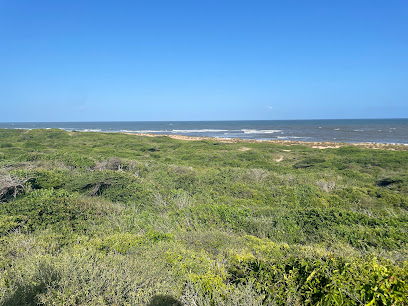
Essential places to dine
Peponi Hotel Lamu
Experience exquisite Kenyan cuisine at Peponi Hotel Lamu, where ocean views meet culinary excellence in Shela.

Lamu Palace Hotel
Discover culinary excellence at Lamu Palace Hotel with local flavors and stunning coastal views in the heart of historic Lamu.

Floating Bar & Restaurant Lamu
Discover culinary bliss at Lamu's Floating Bar & Restaurant, where stunning ocean views meet delicious local cuisine.
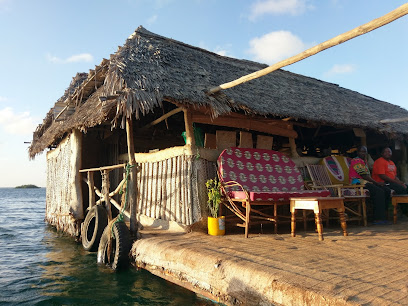
Mangrove Restaurant
Experience authentic coastal cuisine at Mangrove Restaurant in Lamu - where local flavors meet stunning ocean views.
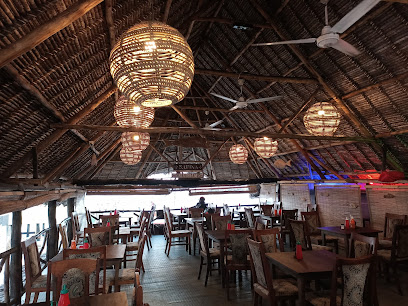
Lamu Sunsail Hotel & Restaurant
Experience authentic Swahili culture at Lamu Sunsail Hotel & Restaurant – where culinary delights meet stunning coastal views.

Seafront Cafe
Experience delicious local cuisine at Seafront Cafe while enjoying breathtaking ocean views in beautiful Lamu.
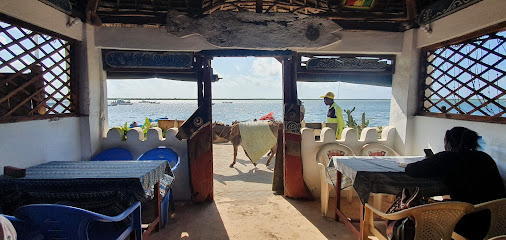
New Mahrus Hotel and Rooftop restaurant
Experience exquisite dining at New Mahrus Hotel and Rooftop Restaurant with breathtaking ocean views in Lamu.
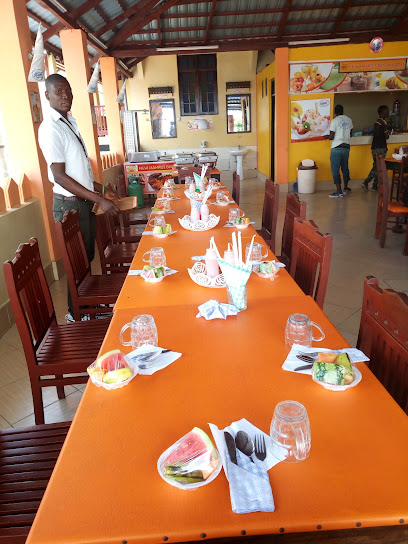
Sea Suq
Discover Sea Suq: A culinary haven in Shela offering fresh seafood and breathtaking ocean views for an unforgettable dining experience.
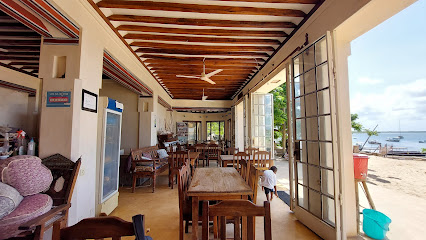
Stop Over Restaurant
Discover authentic Kenyan cuisine at Stop Over Restaurant in Lamu – where local flavors meet welcoming hospitality.
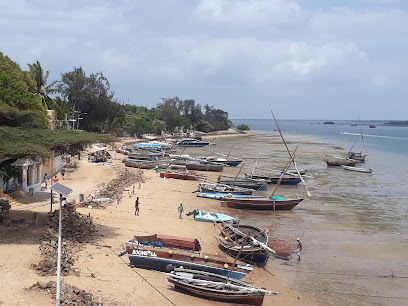
Labanda Restaurant
Discover authentic Swahili flavors and international cuisine at Labanda Restaurant in Lamu - a delightful culinary experience awaits!
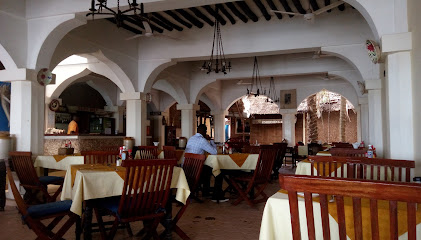
Whispers Cafe
Discover the flavors of Lamu at Whispers Cafe - where local ingredients meet vibrant culinary creativity.
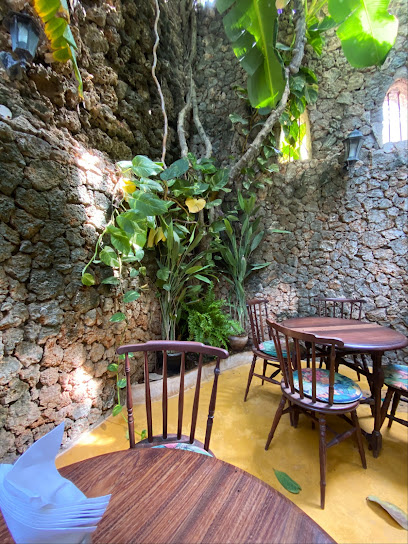
Sailors Joint
Discover culinary delights at Sailors Joint in Lamu - where local flavors meet stunning ocean views for an unforgettable dining experience.
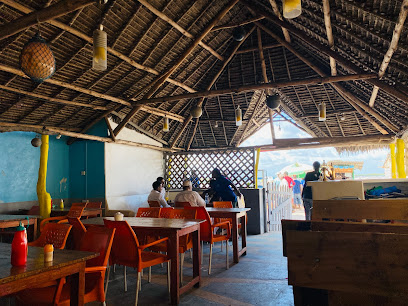
Bush Gardens
Discover Bush Gardens in Lamu: where local cuisine meets serene garden vibes for an unforgettable dining experience.
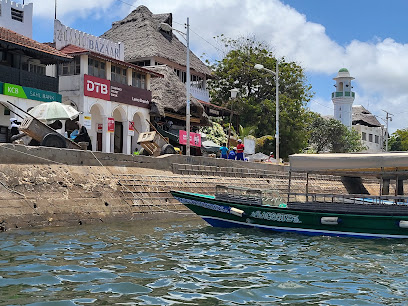
Bahari Restaurant
Experience authentic coastal cuisine at Bahari Restaurant in Shela – where fresh flavors meet stunning ocean views.
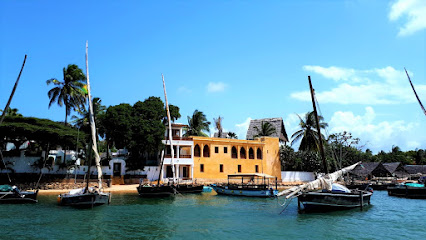
Mwana Arafa Restaurant Gardens
Discover authentic Kenyan cuisine amidst lush gardens at Mwana Arafa Restaurant Gardens in the heart of Lamu.
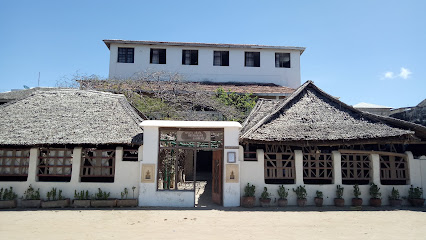
Markets, malls and hidden boutiques
Tumaini Shop Bajuri
Explore Tumaini Shop Bajuri in Lamu for unique crafts, delicious local snacks, and a taste of authentic Kenyan culture.
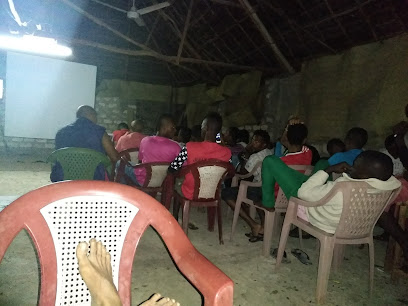
Natural Lamu (Shela)
Explore the essence of Lamu at Natural Lamu, your go-to organic shop for fresh produce and artisanal delights.
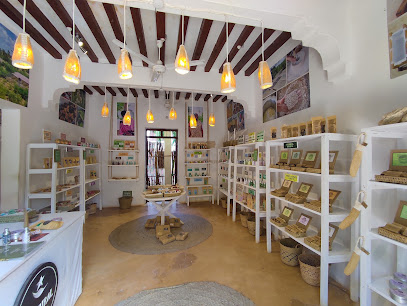
African Corner Lamu
Explore the vibrant craftsmanship of Lamu at African Corner Lamu—your gateway to unique handmade treasures that tell the story of Kenyan culture.
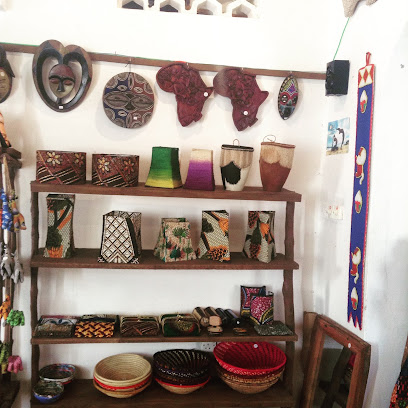
Madina Shop Bajuri
Explore Madina Shop Bajuri in Lamu: Your gateway to local crafts, authentic cuisine, and a vibrant shopping experience.
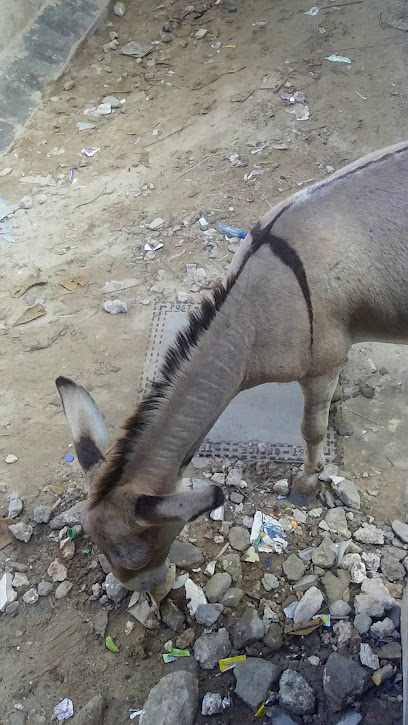
Lamu fine & antique Furniture gallery
Discover timeless elegance and exquisite craftsmanship at Lamu's premier destination for fine and antique furniture.
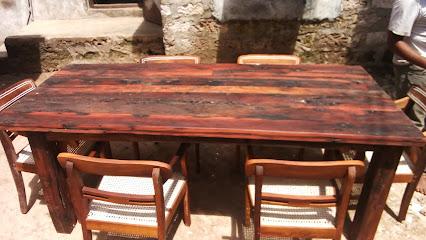
Sikuhuni Sabina shop
Discover the charm of Sikuhuni Sabina Shop in Langoni, where local treasures and authentic Kenyan culture await every visitor.
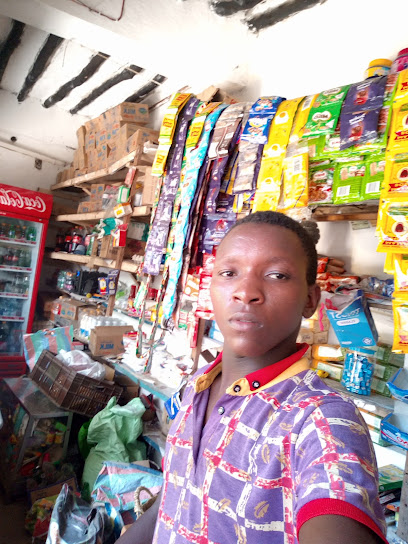
Aman
Discover Aman in Shela, Kenya – an exquisite boutique offering unique local crafts and a serene shopping experience by the beautiful shores.
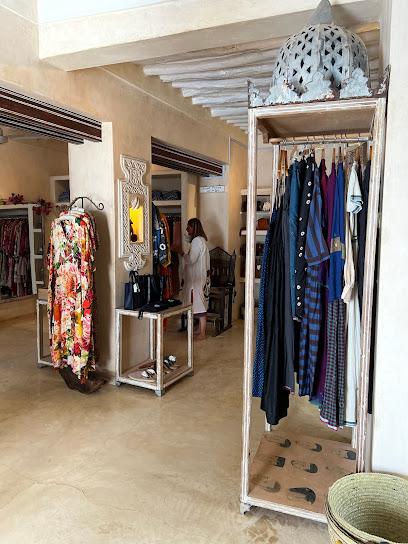
Lamu Local Artist Shop (Shella)
Explore the vibrant artistic culture of Lamu at the Local Artist Shop in Shella, featuring unique handicrafts and sustainable creations.
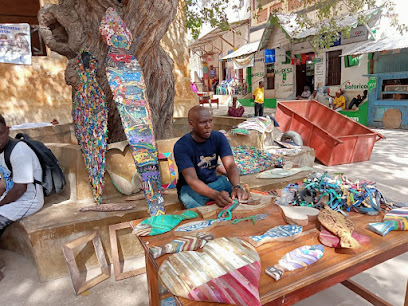
Elizabeth's Tailoring Shop
Experience bespoke craftsmanship at Elizabeth's Tailoring Shop in Lamu, where tradition meets modern fashion for unforgettable custom clothing.
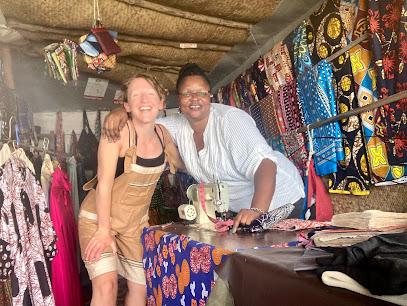
ARAFAT SHOP WHOLESALE
Explore the flavors of Lamu at Arafat Shop Wholesale, a local grocery store known for fresh produce, spices, and a taste of Kenyan culture.
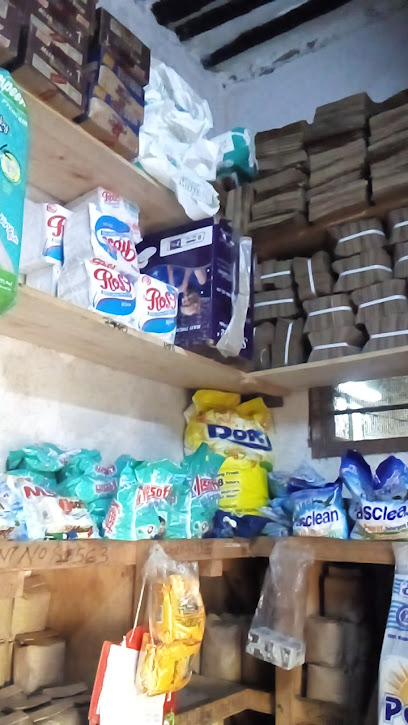
Aly King Boutique
Explore Aly King Boutique in Lamu for unique clothing that blends local culture with contemporary fashion, perfect for every traveler.
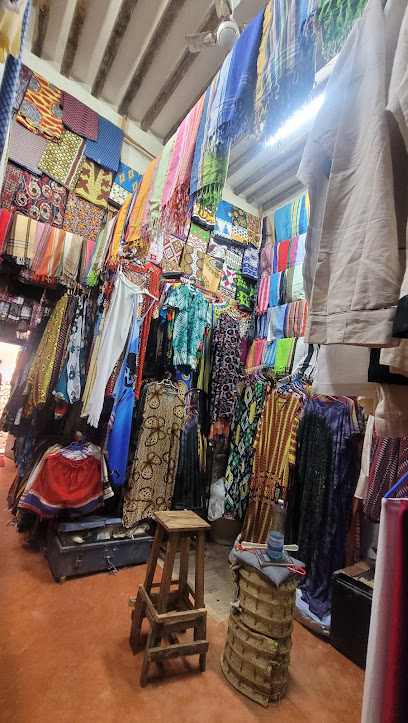
Sawwar Shop
Experience the vibrant essence of Lamu at Sawwar Shop, your go-to general store for local treasures and authentic Swahili culture.

Lulu Stories
Explore Lulu Stories in Shela, Lamu Island - your destination for unique handcrafted gifts and treasures that embody local culture.
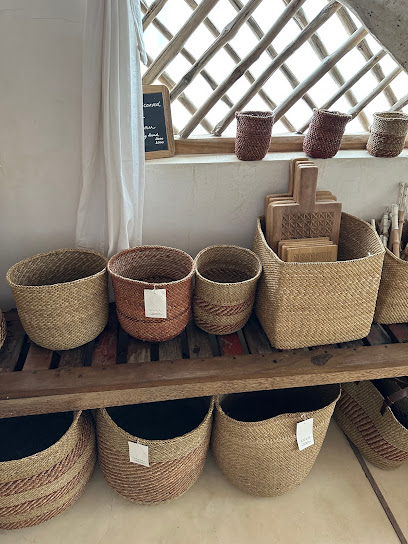
Halwa shop
Discover the sweet essence of Lamu at the Halwa Shop, where traditional halwa delights await every visitor.
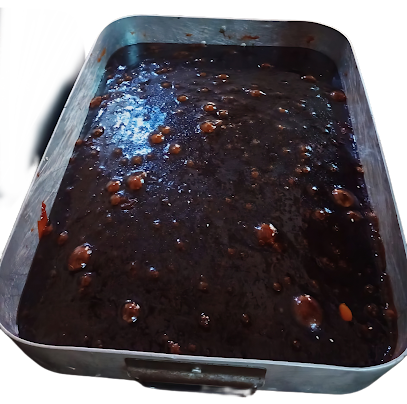
pinpop mitumba shop(next to governor kinyozi)
Explore Lamu's vibrant fashion scene at Pinpop Mitumba Shop, where unique second-hand clothing awaits every style enthusiast.

Essential bars & hidden hideouts
Floating Bar & Restaurant Lamu
Experience the ultimate seaside dining at Floating Bar & Restaurant Lamu, where delicious food meets breathtaking views on the Indian Ocean.
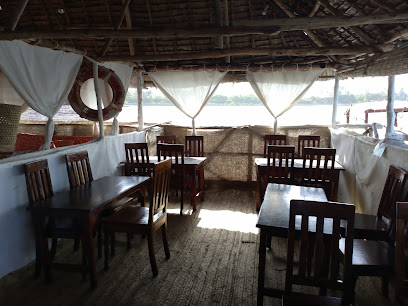
Mangrove Restaurant
Experience the rich culinary heritage of Lamu at Mangrove Restaurant, where local flavors meet breathtaking surroundings.
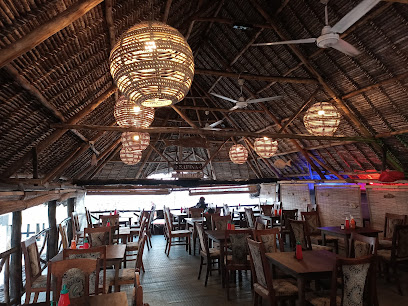
Seafront Cafe
Experience the flavors of Lamu at Seafront Cafe, where every meal is accompanied by breathtaking ocean views and a warm, inviting atmosphere.
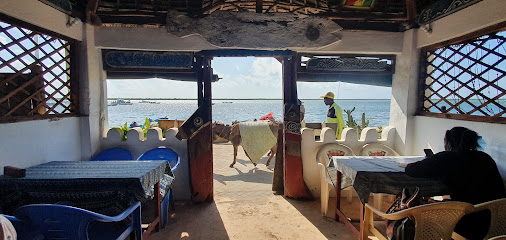
New Mahrus Hotel and Rooftop restaurant
Discover the culinary delights and breathtaking views at New Mahrus Hotel and Rooftop Restaurant in Lamu, a perfect blend of local culture and exquisite dining.
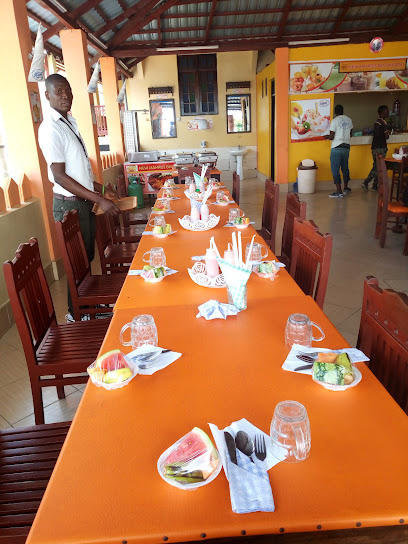
Stop Over Restaurant
Discover the rich flavors and welcoming atmosphere at Stop Over Restaurant in Lamu, where culinary traditions meet modern dining.
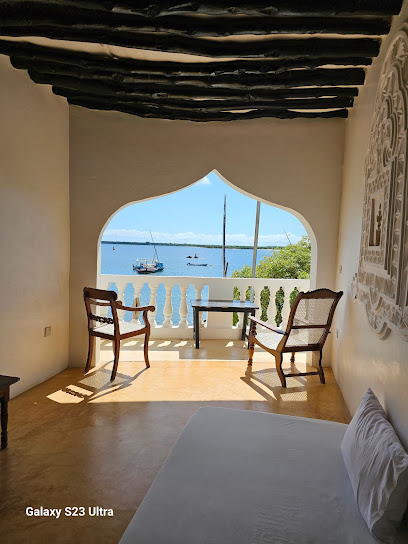
Labanda Restaurant
Experience the vibrant flavors of Lamu at Labanda Restaurant, where local cuisine meets warm hospitality in a charming setting.
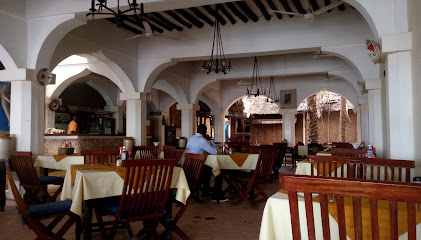
Whispers Cafe
Experience the best of Lamu's culinary scene at Whispers Cafe, where local flavors meet stunning views in a serene setting.
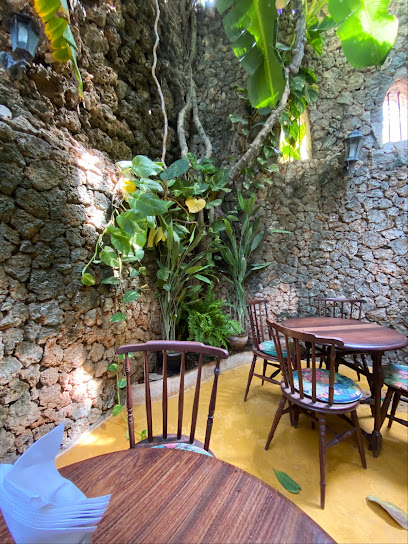
Sailors Joint
Discover Sailors Joint: Lamu's premier dining destination offering exquisite local and international cuisine with breathtaking coastal views.
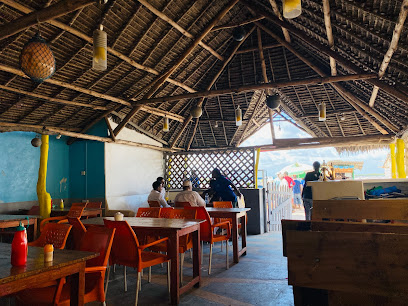
Bush Gardens
Discover the vibrant flavors of Kenya at Bush Gardens, a culinary gem in Lamu offering a delightful dining experience amidst lush gardens.
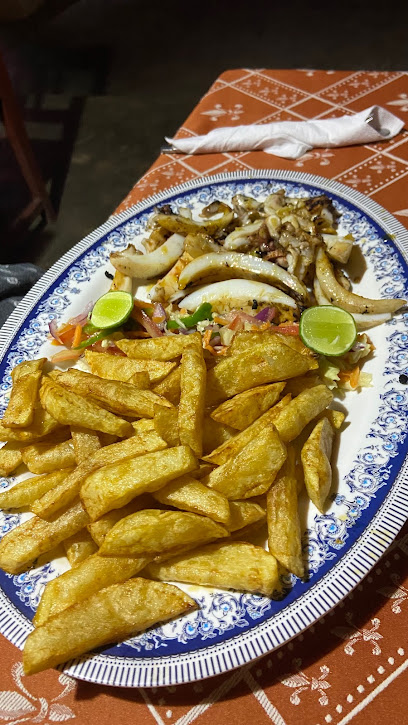
Coco Jambo Restaurant
Experience the flavors of Lamu at Coco Jambo Restaurant, where local cuisine meets warm hospitality in a vibrant coastal setting.
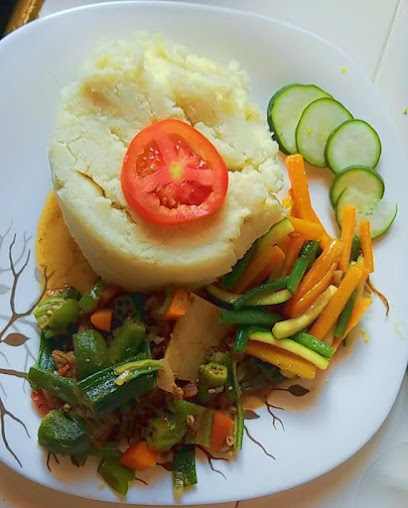
Mararaha Lounge
Discover the lively and inviting Mararaha Lounge in Shela, where exquisite cocktails and a vibrant atmosphere await every visitor.
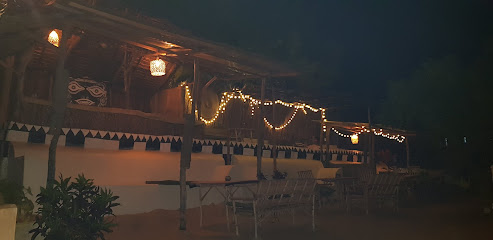
MaraRaha Village
Experience the vibrant bar scene at MaraRaha Village, where tropical vibes meet refreshing drinks and live music in Shela.
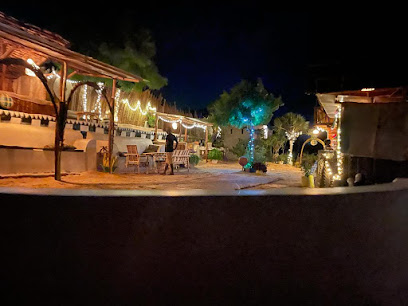
Peponi Hotel bar & restaurant
Unwind at Peponi Hotel Bar & Restaurant in Shela, where local flavors and stunning views create an unforgettable dining experience.
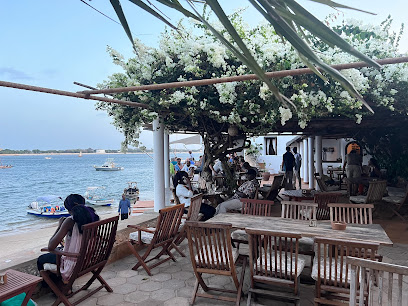
Moonrise restaurant
Discover the culinary paradise of Moonrise Restaurant in Lamu, where local flavors and stunning views create an unforgettable dining experience.
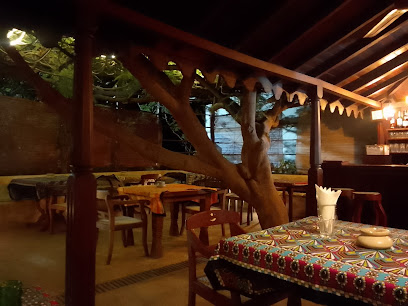
Kijani Rooftop Restaurant
Kijani Rooftop Restaurant: Enjoy breathtaking views and authentic Kenyan cuisine in Shela, a perfect blend of flavor and scenery.

Local Phrases about Lamu Island
-
- HelloShikamoo
[shee-kah-moh] - GoodbyeKwaheri
[kwah-heh-ree] - YesNdio
[n-dee-oh] - NoHapana
[hah-pah-nah] - Please/You're welcomeKaribu
[kah-ree-boo] - Thank youAsante
[ah-sahn-teh] - Excuse me/SorrySamahani
[sah-mah-hah-nee] - How are you?U hali gani?
[oo hah-lee gah-nee?] - Fine. And you?Salama. Na wewe?
[sah-lah-mah. Nah weh-weh?] - Do you speak English?Unazungumza Kiingereza?
[oo-nah-zoo-ngoom-zah keen-geh-reh-zah?] - I don't understandSielewi
[see-eh-leh-wee]
- HelloShikamoo
-
- I'd like to see the menu, pleaseNataka kuona menu, tafadhali
[nah-tah-kah koo-oh-nah meh-noo, tah-fah-dah-lee] - I don't eat meatSi kula nyama
[see-koo-lah n-yah-mah] - Cheers!Saluti!
[sah-loo-tee] - I would like to pay, pleaseNingependa kulipa, tafadhali
[nee-neh-gehn-pehn-dah koo-lee-pah, tah-fah-dah-lee]
- I'd like to see the menu, pleaseNataka kuona menu, tafadhali
-
- Help!Msaada!
[msah-ah-dah] - Go away!Nenda zako!
[nehn-dah zah-koh] - Call the Police!Piga polisi!
[pee-gah poh-lee-see] - Call a doctor!Piga daktari!
[pee-gah dahk-tah-ree] - I'm lostNimepotea
[nee-meh-poh-teh-ah] - I'm illNinaumwa
[nee-nah-oom-wah]
- Help!Msaada!
-
- I'd like to buy...Ningependa kununua...
[nee-neh-gehn-pehn-dah koo-noo-noo-ah] - I'm just lookingNinaangalia tu
[nee-nah-ahn-gah-lee-ah too] - How much is it?Bei ni kiasi gani?
[beh-ee nee kee-ah-see gah-nee?] - That's too expensiveHilo ni ghali sana
[hee-loh nee gah-lee sah-nah] - Can you lower the price?Unaweza kushusha bei?
[oo-nah-weh-zah koo-shoo-shah beh-ee?]
- I'd like to buy...Ningependa kununua...
-
- What time is it?Saa ngapi?
[sah-ah ngah-pee?] - It's one o'clockSaa moja
[sah-ah moh-jah] - Half past (10)Saa tano unusu
[sah-ah tah-noh oo-noo-soo] - MorningAsubuhi
[ah-soo-boo-hee] - AfternoonMchana
[m-chee-nah] - EveningJioni
[joh-ee-nee] - YesterdayJana
[jah-nah] - TodayLeo
[leh-oh] - TomorrowKesho
[keh-shoh] - 1Moja
[moh-jah] - 2Mbili
[m-bee-lee] - 3Tatu
[tah-too] - 4Nne
[n-neh] - 5Tano
[tah-noh] - 6Sita
[see-tah] - 7Saba
[sah-bah] - 8Nane
[nah-neh] - 9Tisa
[tee-sah] - 10Kumi
[koo-mee]
- What time is it?Saa ngapi?
-
- Where's a/the...?Iko wapi...?
[ee-koh wah-pee...?] - What's the address?Anwani ni gani?
[ahn-wah-nee nee gah-nee?] - Can you show me (on the map)?Unaweza kunionyesha (kwenye ramani)?
[oo-nah-weh-zah koo-nee-oh-nyeh-shah (kweh-neh rah-mah-nee)?] - When's the next (bus)?Basi la mwisho ni saa ngapi?
[bah-see lah mwee-show nee sah-ah ngah-pee?] - A ticket (to ....)Tikiti (kwenda ....)
[tee-kee-tee (kwehn-dah ....)]
- Where's a/the...?Iko wapi...?
History of Lamu Island
-
Lamu Island is one of the oldest Swahili settlements in East Africa, with its history dating back to at least the 12th century. The island has long been a melting pot of African, Arab, Persian, and Indian cultures, which collectively contributed to the unique Swahili culture that thrives on the island today. The Swahili people developed a distinct language, Swahili (Kiswahili), which is a Bantu language heavily influenced by Arabic.
-
In the early 16th century, the Portuguese arrived on the East African coast and took control of Lamu Island. Their dominance lasted until the late 17th century when the Omanis ousted them. Under Omani rule, Lamu became an important hub in the Indian Ocean trade network, dealing in goods such as ivory, mangrove timber, and slaves. The Omani influence is evident in the island's architecture, cuisine, and local customs.
-
One of the most significant historical events on Lamu Island is the Battle of Shela, which took place in 1812. This was a conflict between the Sultanate of Pate and the Sultanate of Oman. The battle resulted in a decisive victory for the Omanis, which further solidified their control over the island and the surrounding region. The town of Shela, located on the island, still bears the marks of this historic confrontation.
-
Lamu Old Town, a UNESCO World Heritage site, is a well-preserved Swahili settlement with a history that spans over 700 years. The town's narrow streets, coral stone buildings, and intricate wooden doors are a testament to its rich cultural heritage. The Old Town is a living museum where traditional Swahili life continues amidst the historic buildings. Key landmarks include the Lamu Fort, built by the Omanis in the early 19th century, and the Riyadha Mosque, founded in 1889 by Habib Swaleh.
-
The Lamu Cultural Festival is an annual event that celebrates the island's rich heritage and traditions. It includes a variety of activities such as dhow races, traditional Swahili poetry (mashairi), music, dance, and crafts. This festival is a vibrant display of the island's culture and attracts visitors from all over the world who come to experience the unique blend of African, Arab, and Persian influences that define Lamu.
-
Lamu Island has historically been an important center for trade and commerce owing to its strategic location along the Indian Ocean trade routes. Traders from as far as China, India, and the Arabian Peninsula frequented the island, bringing with them goods, ideas, and cultural practices. The bustling Lamu port facilitated the exchange of commodities such as spices, textiles, and pottery, contributing to the island’s prosperity and cosmopolitan nature.
-
During the colonial period, Lamu came under British control as part of the British East Africa Protectorate. The island played a less significant role economically during this time compared to its previous prominence. However, it remained an important cultural and religious center. Lamu, like the rest of Kenya, gained independence from British rule in 1963. Post-independence, Lamu has continued to preserve its rich cultural heritage while adapting to modern influences.
Lamu Island Essentials
-
Lamu Island is located off the northern coast of Kenya in the Indian Ocean. The most common way to reach Lamu is by air. The island is served by the Lamu Airport (Manda Airport), which receives flights from Nairobi's Jomo Kenyatta International Airport as well as Wilson Airport via airlines such as Safarilink and Fly540. Alternatively, you can take a bus or drive to the coastal town of Mombasa or Malindi and then catch a ferry or speedboat to Lamu Island. The boat ride from the mainland to the island typically takes around 30 minutes.
-
Lamu Island is largely car-free, and the primary modes of transportation are by foot, donkey, or boat. Walking is the most convenient way to explore the narrow streets of Lamu Town. For longer distances or transporting goods, donkeys are commonly used. Water taxis and dhows (traditional wooden sailing boats) are available for traveling between different parts of the island and to nearby islands. Bicycles can also be rented for a small fee.
-
The official currency in Kenya is the Kenyan Shilling (KES). While larger hotels and some restaurants may accept credit cards, cash is preferred in most local establishments. ATMs are available in Lamu Town, but it is advisable to carry sufficient cash, especially when visiting more remote areas of the island. Currency exchange services are also available in Lamu Town.
-
Lamu Island is generally safe for tourists, but it is important to take standard precautions. Avoid walking alone at night in isolated areas and be cautious of your surroundings. Petty crime such as pickpocketing can occur, especially in crowded places. Areas like Shela and Lamu Town are typically safe but remain vigilant. Always secure your belongings and avoid displaying valuables in public.
-
In case of emergency, dial 999 for immediate assistance. The main hospital on Lamu Island is King Fahad County Hospital, located in Lamu Town, which provides basic medical services. It is advisable to have travel insurance that covers medical emergencies. For minor health issues, there are several pharmacies in Lamu Town. The nearest police station is also located in Lamu Town.
-
Fashion: Do dress modestly, especially when visiting religious sites or local communities. Avoid wearing revealing clothing. Religion: Do respect local customs and traditions. When entering mosques, remove your shoes and dress conservatively. Public Transport: Do be respectful and patient when using water taxis or dhows. Don't rush or push others. Greetings: Do greet people with a friendly 'Jambo' (hello in Swahili). Handshakes are common, but use your right hand. Eating & Drinking: Do try local delicacies such as Swahili dishes. Don’t refuse food or drink if offered, as it is considered impolite.
-
To experience Lamu Island like a local, visit the Lamu Old Town, a UNESCO World Heritage Site, to explore its rich history and Swahili architecture. Engage with locals and learn about their traditions and way of life. Don't miss the Lamu Museum for insights into the island's culture and history. For a unique experience, take a dhow sailing trip during sunset. Participate in local festivals such as the Lamu Cultural Festival to immerse yourself in the vibrant traditions of the island.
Trending Landmarks in Lamu Island
Nearby Cities to Lamu Island
-
Things To Do in Malindi
-
Things To Do in Mombasa
-
Things To Do in Diani Beach
-
Things To Do in Tanga
-
Things To Do in Moshi
-
Things To Do in Nairobi
-
Things To Do in Stone Town
-
Things To Do in Zanzibar City
-
Things To Do in Arusha
-
Things To Do in Naivasha
-
Things To Do in Dar es Salaam
-
Things To Do in Nakuru
-
Things To Do in Morogoro
-
Things To Do in Mogadishu
-
Things To Do in Eldoret











